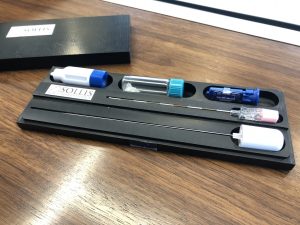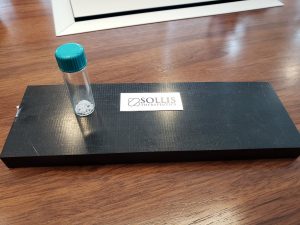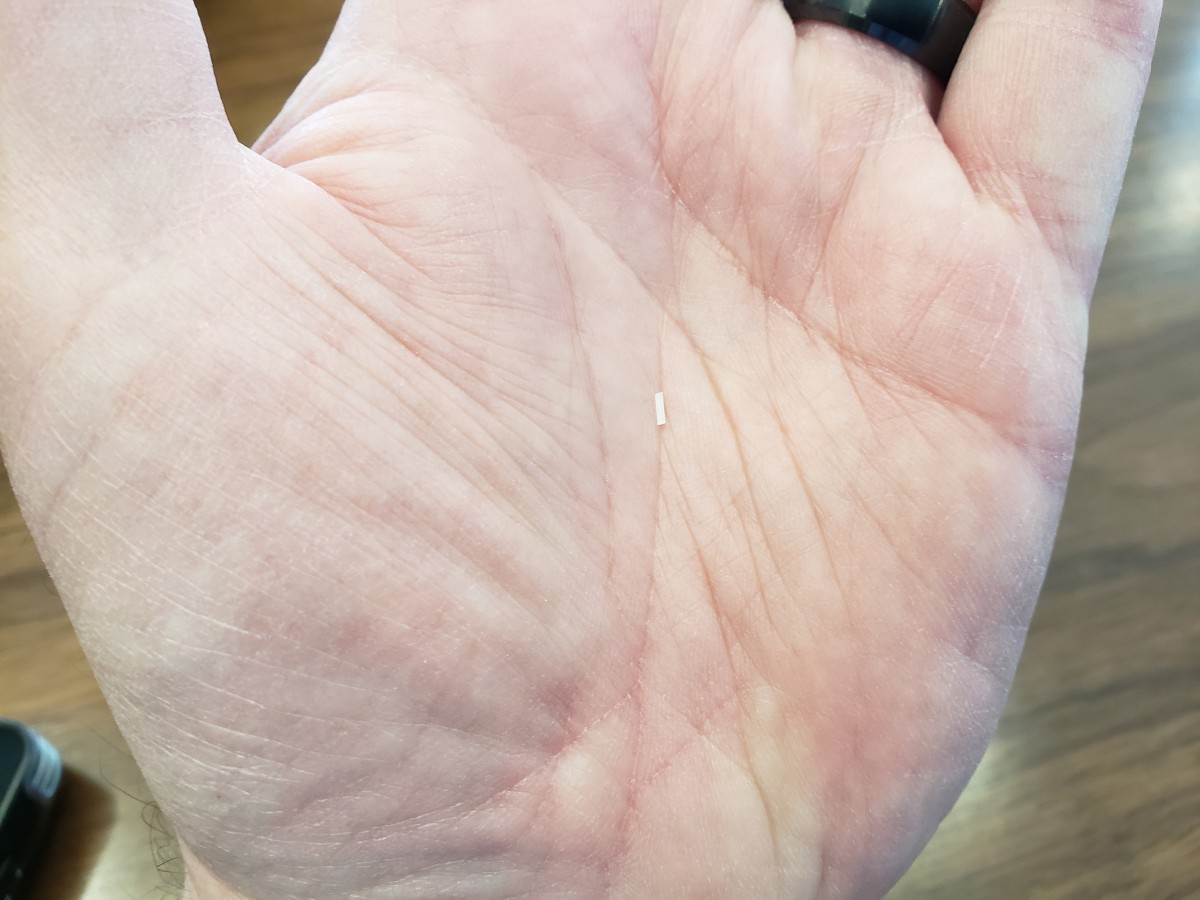MORGANTOWN — West Virginia University’s Rockefeller Neuroscience Institute is leading the nation in exploring a way to treat chronic pain without opioids.

The new pain treatment is an injectable, non-opioid, non-steroid micropellet. It’s tiny — half the size of a grain of rice, as WVU describes it — and looks like the top of one of those little plastic clothing tabs you have to snap or snip apart to unfold your new clothes.
The micropellet is a dissolvable polymer containing clonidine: a blood pressure medicine introduced back in 1974 that is also used to treat pain.
The institute is the first center in the nation to conduct a Phase III clinical trial of the micropellet to treat sciatica – pain along the sciatic nerve from the lower back down into the legs. The first patient was enrolled in mid-November. It’s been tested on two people so far, with a possible third on the immediate horizon.

The problem with clonidine pills, said Dr. Ali Rezai, executive chair of the institute, is that they carry side effects — primarily lowering blood pressure. This new, injectable micropellet is intended to deliver targeted relief to the affected area without the system-wide effects of clonidine and, more importantly, steroids or opioids.
The micropellet is injected into the lower back with a standard epidural needle. It sits and dissolves over the course of several weeks.
Sciatica pain, Rezai said, typically goes away after a month if it gets healed. So if they can treat the pain and inflammation early on, the body heals itself. The micropellet can reduce the need to take medications.
“This way you deal with the opioid addiction issue at its root.”
Rezai is not involved in the trial himself, but helped develop the extended-release micropellet. He is a scientific advisor for Columbus, Ohio-based Sollis Therapeutics, which manufactures it.
Sollis explains that clonidine interrupts pain signals sent from one nerve to another. Blocking this communication prevents pain signals from reaching the brain and results in immediate pain relief. Clonidine also breaks the inflammatory cycle of sciatica and prevents progression to chronic pain.
Sollis said the micropellet has similar potency to morphine, without the addictive qualities, and is stronger than bupivacaine, also known as Marcaine.
While WVU is leading the way, Sollis plans to enroll 200 subjects at up to 30 U.S. sites. The trial will compare the effect of the clonidine micropellet against a sham control (placebo) for pain relief.
Sollis said that sciatica affects approximately 5 percent of U.S. adults annually and is most commonly caused by a herniated intervertebral disc. There are no FDA approved medicines to treat sciatica and many patients receive opioids or steroid injections. Rezai added that about 11 million steroid injections are delivered per year.
Opioids immediately affect the brain chemistry upon the first dose, Rezai said. A person who takes opioids for just one day has a 6 percent chance of still needing it and taking it within in a year. For some, it turns to addiction.
“West Virginia University is taking the lead in the world to come up with innovative solutions to tackle this opioid crisis,” he said.
Rezai emphasized that this is a trial. “There’s a chance it may not work.” But they hope it does.
If it does, it will be part of an array of approaches WVU is developing to tackle the opioid crisis, he said. They are also exploring ways to treat addiction, including magnetic brain stimulation to reduce cravings and ultrasound technology to address the part of the brain involved in cravings.
A third avenue is aimed at prevention. This involves a wearable sensor in the form of a watch or ring that will monitor the physiological signals linked to increased cravings.
The idea is that the sensor will detect those signals before the wearer becomes aware of the craving, and warn the wearer, family members and caregivers so that they, as a team, can do what’s needed to deliver the wearer from whatever situation or environment is triggering the craving.
Looking beyond sciatica, Rezai said, “If the results are successful, I think there will be many opportunities to explore other applications. … Why take medications that are systemic or have systemic side effects?”
Rezai credits Sens. Joe Manchin and Shelley Moore Capito and particularly Gov. Jim Justice for supporting WVU’s efforts to provide leadership in exploration of new medical technologies and treatment options.
“We want to be first in West Virginia. Our goal is to rapidly bring technology here for West Virginians, so we can tackle the big public health challenges — Alzheimer’s or addiction.”
Tweet David Beard @dbeardtdp Email dbeard@dominionpost.com




